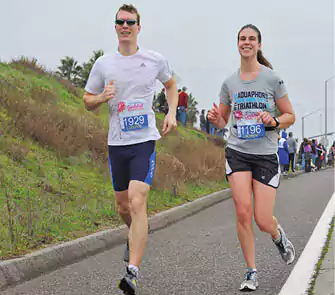Running can give you a longer life, better sleep, improved immunity, mood and more—it’s even good for your knees and lower back. When you become a runner, it changes your life. But you may not know how much it improves every aspect. Here’s the evidence on the amazing benefits running can give you: Numerous studies have shown that running increases lifespan. This has led to the oft-repeated observation: “If exercise were a pill, it would be the most popular pill in the world.” Worth noting: It would also be the least expensive, with little to no cost.
A 2018 meta-analysis of research on running and longevity found that runners have about a 25 to 30 percent lower rate of all-cause mortality on follow-up than non runners. It concluded: “Any amount of running, even once a week, is better than no running.” Another runner-specific paper showed that runners gain about three years of extra life.
Why? Some of the biological pathways include: greater cardiovascular fitness, better body composition (less fat), lower cholesterol, excellent glucose and insulin control, stronger bones, better hormone regulation, and positive neurological functioning.
Few of us, however, simply want to live longer. Rather, we hope for a long, productive, healthy, active life. That’s where running and high-fitness shine. Since “seniors” consume a high percent of the public-health budget with their late-life illnesses, much research is targeted at what can be done to keep them healthy. Exercise nearly always wins this race.
For example, recent research at Ball State University found that a group of 75-year-old lifetime runners and bicyclists (who had been exercising for 50 years) had biological profiles closer to 25-year-old graduate students than to their non-exercising 75-year-old peers. In another famous study, Stanford researchers compared local runners in their mid-50s with non-exercising Stanford community members who had the same top-notch medical care. Twenty-one years later, the death rate was more than 50 percent lower among the runners.
More unexpectedly, the runners were reaching certain “disability scores” 11 to 16 years later than the non-runners.
In other words, they were staying younger for longer. And the older the subjects became, the greater the advantages seen among runners.










